Foxes have captivated human imagination for centuries with their striking beauty, remarkable intelligence, and elusive nature. These adaptable canids inhabit diverse ecosystems across the globe, from dense forests to urban landscapes. While foxes can sometimes be spotted in unexpected places, certain locations around the world offer particularly enchanting opportunities to observe these mesmerizing creatures in their natural habitats. This article explores the most magical destinations where wildlife enthusiasts and nature lovers can witness foxes in the wild, highlighting the best times to visit, the species you might encounter, and tips for respectful wildlife observation.
The Mystical Red Foxes of Hokkaido, Japan

Japan’s northernmost island, Hokkaido, offers one of the most magical fox-viewing experiences in the world. Here, the native Ezo red fox (Vulpes vulpes schrencki) thrives in the pristine wilderness of national parks like Shiretoko and Akan Mashu. These foxes are particularly revered in Japanese culture, associated with Inari, the Shinto deity of fertility and prosperity. Local folklore even speaks of kitsune, supernatural fox spirits with shape-shifting abilities.
Winter transforms Hokkaido into a truly enchanted landscape for fox observation. Against the snowy backdrop, the red foxes’ vibrant fur creates a striking contrast that photographers find irresistible. The town of Rausu is particularly renowned for fox sightings, where these intelligent creatures have grown somewhat accustomed to human presence. For the most magical experience, visit between January and March when foxes sport their thickest winter coats and are more active during daylight hours hunting for food in the snow.
Britain’s Urban Fox Phenomenon in London
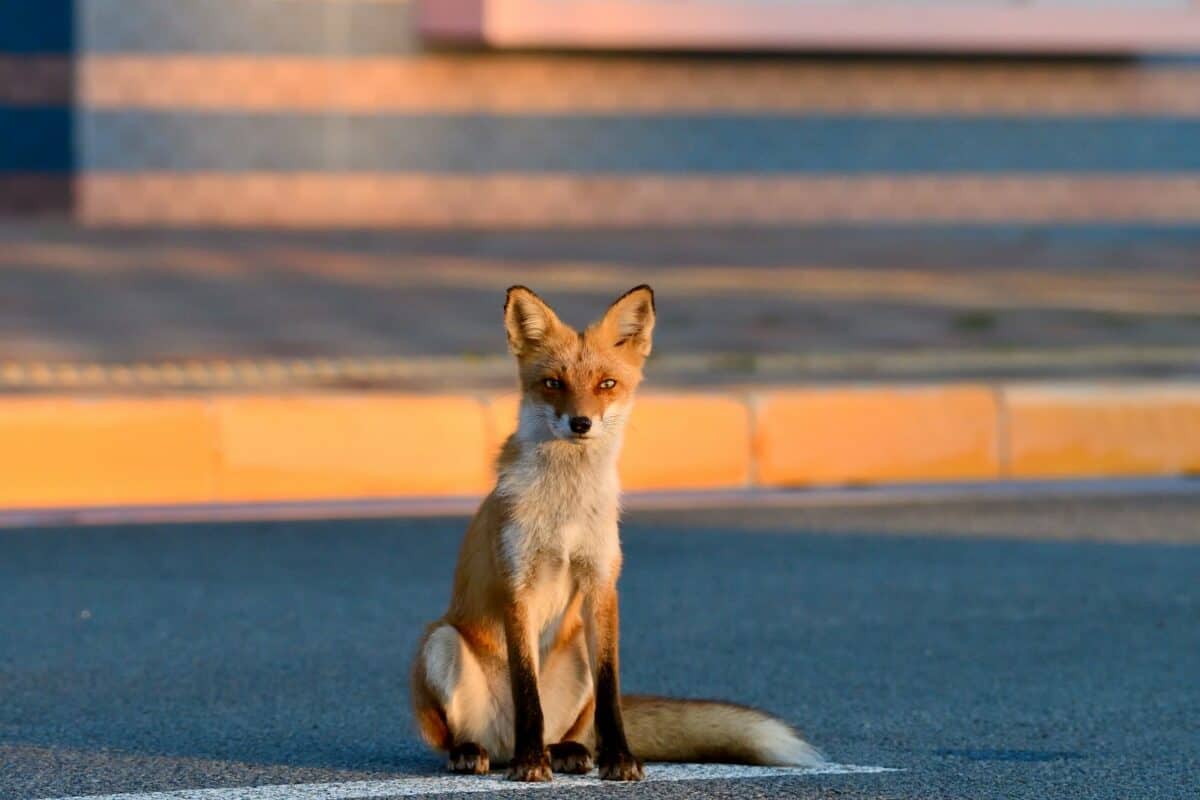
In a remarkable display of adaptation, red foxes have established thriving populations in the heart of London, creating one of the most accessible fox-watching opportunities in the world. These urban foxes have adjusted their behavior to city life, becoming more nocturnal and developing unique strategies to navigate human-dominated landscapes. Estimates suggest London hosts approximately 10,000 urban foxes, with densities reaching up to 15 foxes per square kilometer in some areas.
The best locations for urban fox spotting include London’s expansive parks like Hampstead Heath and Richmond Park, particularly at dawn or dusk. Spring offers the special opportunity to spot fox cubs emerging from their dens, typically in April and May. While these urban foxes might seem more approachable than their rural counterparts, observers should maintain respectful distances and never feed them, as this can lead to problematic dependencies and altered natural behaviors. The juxtaposition of these wild creatures against London’s urban backdrop creates a truly magical wildlife experience unlike any other.
San Juan Island’s Enchanting Fox Population, Washington, USA
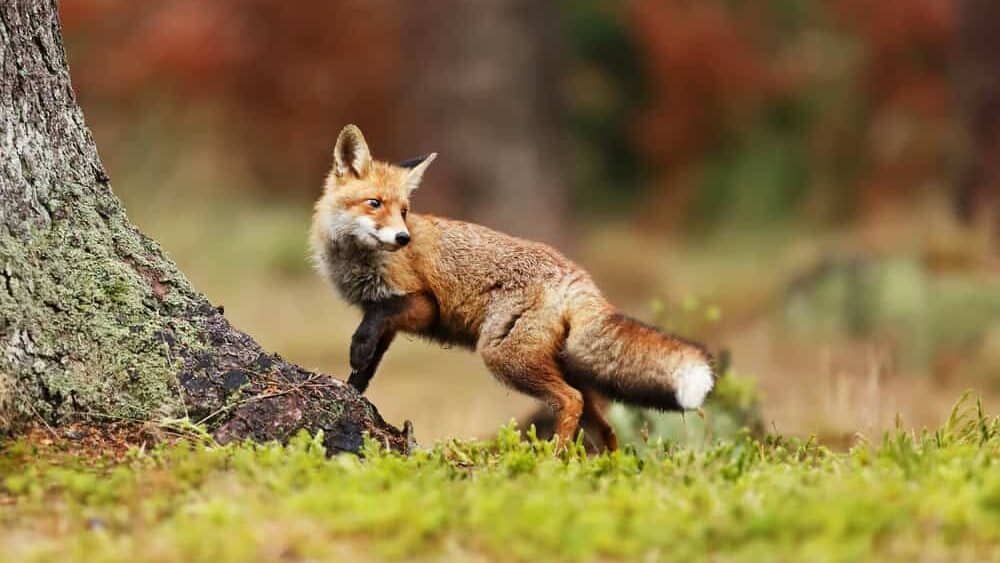
San Juan Island in Washington State hosts a unique population of non-native red foxes that have created one of North America’s most accessible fox-viewing destinations. Originally introduced to the island in the early 1900s, these foxes have established themselves primarily in the grasslands of American Camp, part of San Juan Island National Historical Park. What makes this location particularly special is the foxes’ stunning color variations – visitors might spot the traditional red morph, but also the more uncommon cross, silver, and black color phases all within the same population.
The open prairie landscape provides unobstructed viewing opportunities, especially during summer mornings and evenings when foxes are most active hunting for small rodents. The island’s foxes have become somewhat habituated to respectful human observers, sometimes allowing for closer observation than would be possible elsewhere. This creates magical photographic opportunities, though visitors should still maintain appropriate distances (at least 75 feet) and use telephoto lenses rather than approaching the animals. The combination of dramatic coastal scenery and relatively approachable foxes makes San Juan Island a truly enchanting destination for fox enthusiasts.
Arctic Fox Wonders in Iceland
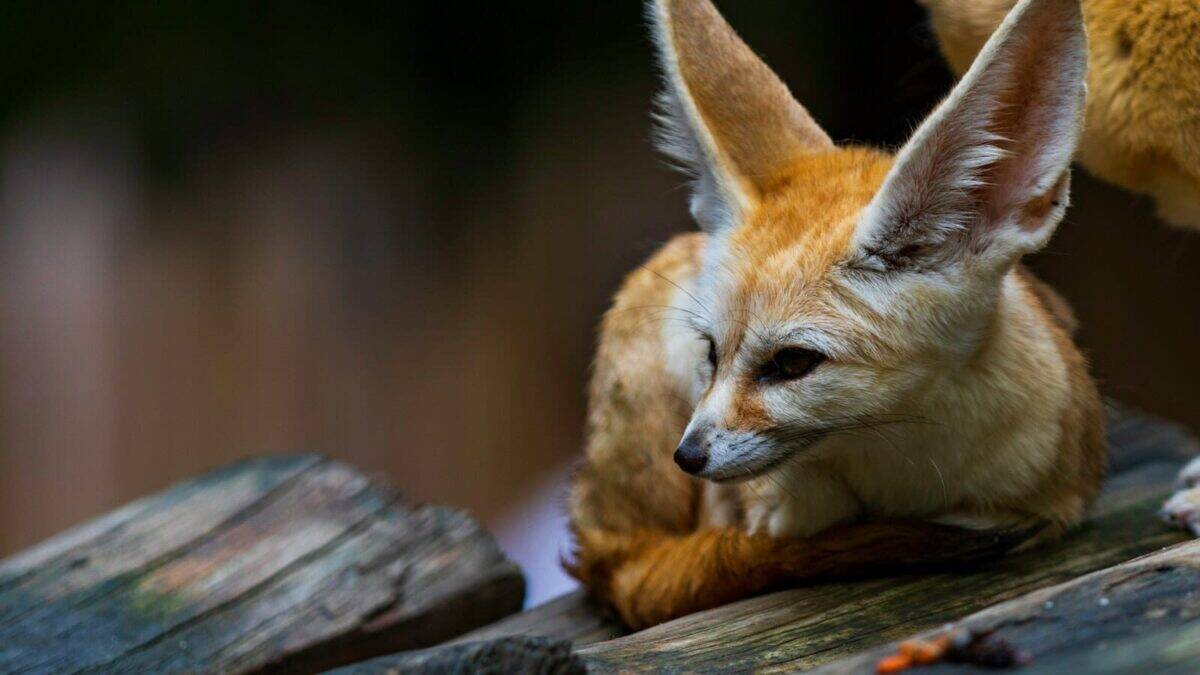
Iceland offers one of the most ethereal settings to observe the Arctic fox (Vulpes lagopus), the only native terrestrial mammal on the island. These remarkable creatures have inhabited Iceland since the Ice Age, developing unique adaptations to survive in one of Europe’s most challenging environments. The Hornstrandir Nature Reserve in the remote Westfjords provides the most magical viewing opportunities, with its protected status ensuring minimal human disturbance to the fox population.
What makes Iceland’s Arctic foxes particularly special is their dramatic seasonal transformation – changing from a brown summer coat to pristine white winter fur (though some Icelandic foxes maintain a beautiful blue-gray coloration year-round). Summer visitors between June and August enjoy extended daylight hours, increasing chances of spotting foxes caring for their young outside den sites. Winter observations are more challenging but equally rewarding, as the white foxes create a mesmerizing contrast against volcanic landscapes. For a truly magical experience, the Hornstrandir Nature Reserve offers multi-day hiking tours with experienced guides who know the fox territories intimately and can facilitate respectful wildlife encounters.
The Fennec Foxes of Tunisia’s Sahara
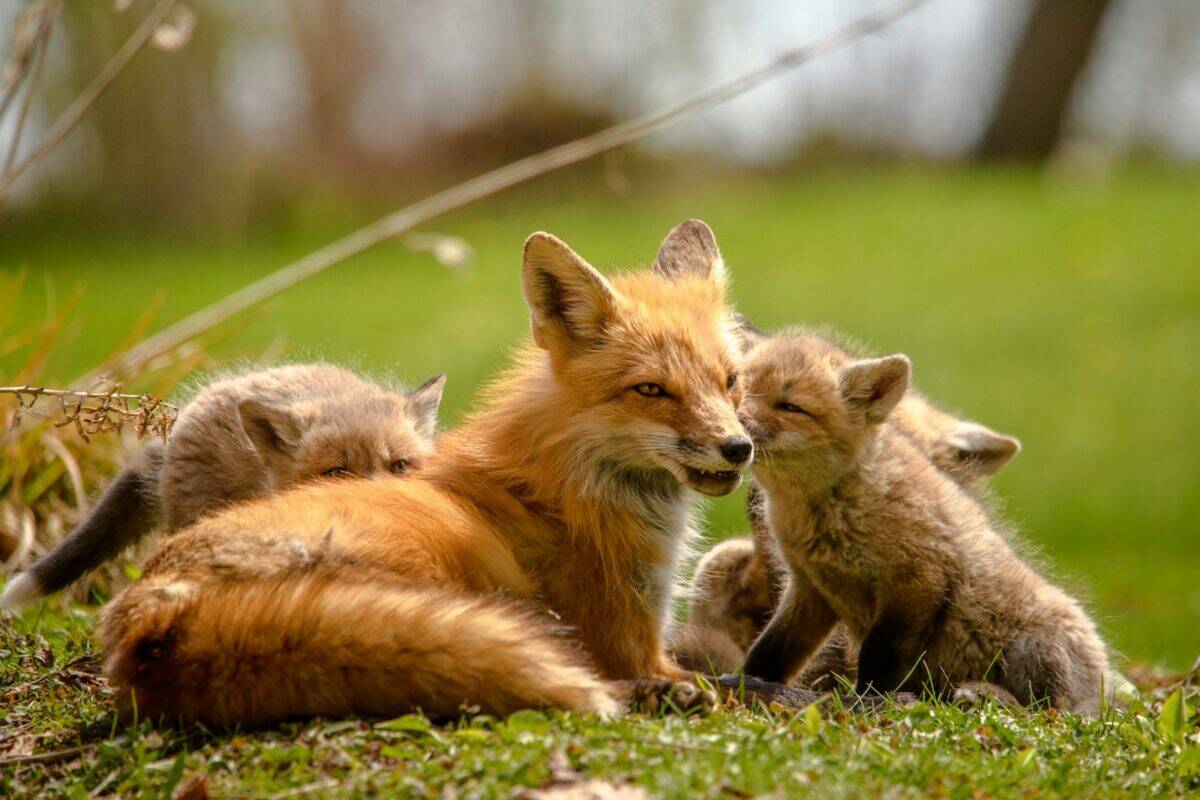
For those seeking to observe one of the most enchanting fox species on Earth, Tunisia’s southern desert regions offer rare glimpses of the fennec fox (Vulpes zerda). With their disproportionately large ears and tiny bodies, fennec foxes seem almost mythical in appearance. These adaptations help them survive in one of the planet’s harshest environments, the Sahara Desert. The Douz region and the edges of the Grand Erg Oriental provide the best opportunities for fennec fox sightings, particularly on specialized desert safaris.
Unlike many fox-viewing experiences, observing fennec foxes typically requires nighttime excursions, as these nocturnal creatures emerge after sunset to hunt in cooler temperatures. Experienced local guides use specialized techniques to locate these elusive animals, including tracking their distinctive footprints in the sand and identifying their den sites among the dunes. The best time to visit is during the cooler months between October and April, when temperatures are more tolerable for both humans and foxes. The magical sight of these miniature desert foxes bounding across moonlit sand dunes creates an unforgettable wildlife experience that feels plucked straight from a fantasy tale.
Magical Gray Fox Encounters in Costa Rica
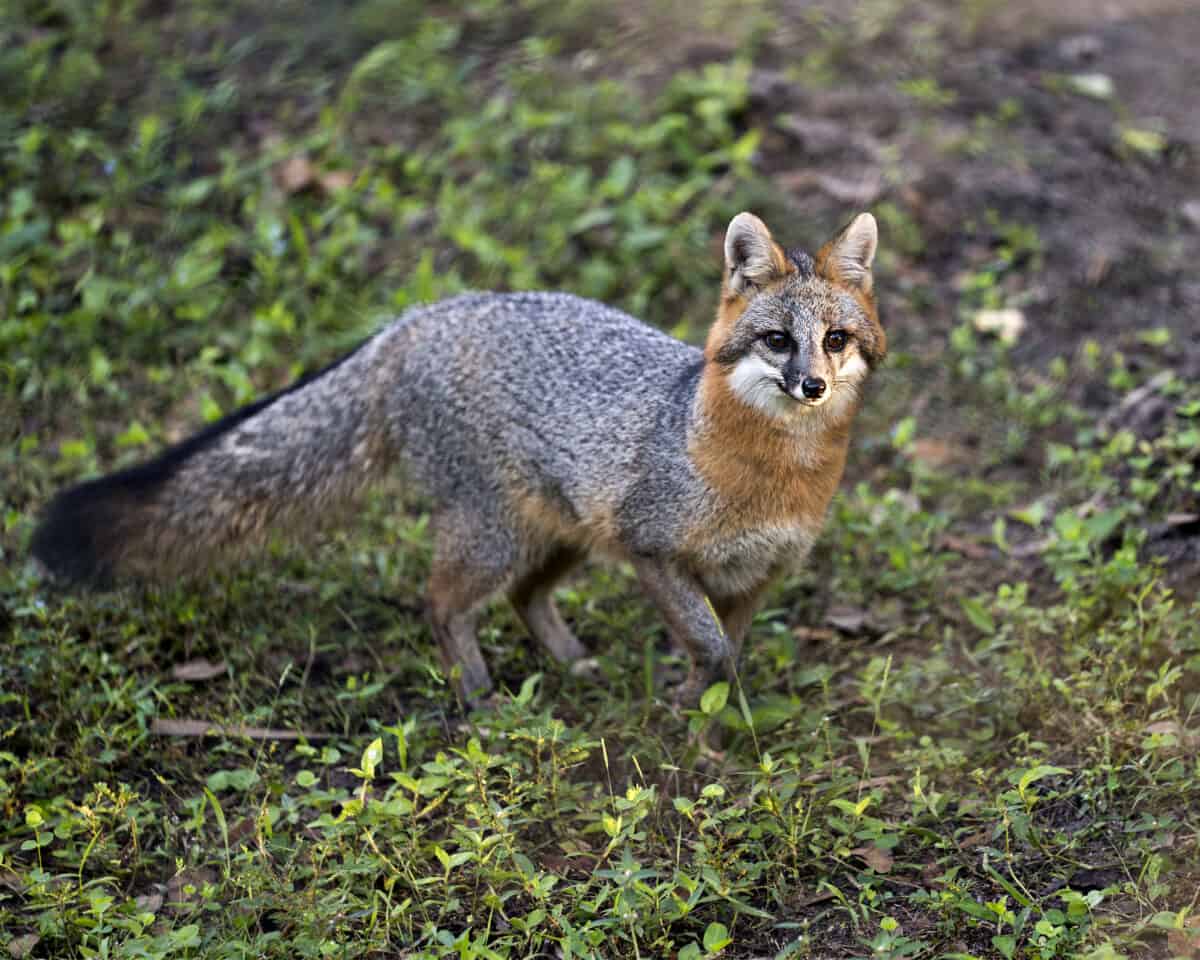
Costa Rica’s tropical forests harbor the fascinating gray fox (Urocyon cinereoargenteus), creating one of the most unique fox-viewing opportunities in the Americas. Unlike most fox species, gray foxes possess the remarkable ability to climb trees, making Costa Rica’s forests an enchanted setting to observe this unusual behavior. The Monteverde Cloud Forest Reserve and Santa Rosa National Park offer the best chances for spotting these agile canids, particularly along forest edges where they hunt for small mammals, birds, and fruits.
Early morning and late afternoon provide optimal viewing opportunities, especially during the dry season from December to April when reduced foliage improves visibility. What makes Costa Rican gray fox encounters particularly magical is the backdrop of extraordinary biodiversity – observers might simultaneously spot tropical birds, monkeys, and other wildlife while searching for foxes. Local guides can significantly enhance the experience by identifying gray fox territories and teaching visitors to recognize their distinctive tracks and vocalizations. The unique combination of lush tropical settings and tree-climbing foxes creates a truly enchanted wildlife viewing experience unlike any other.
The Enigmatic Kit Foxes of Death Valley, USA
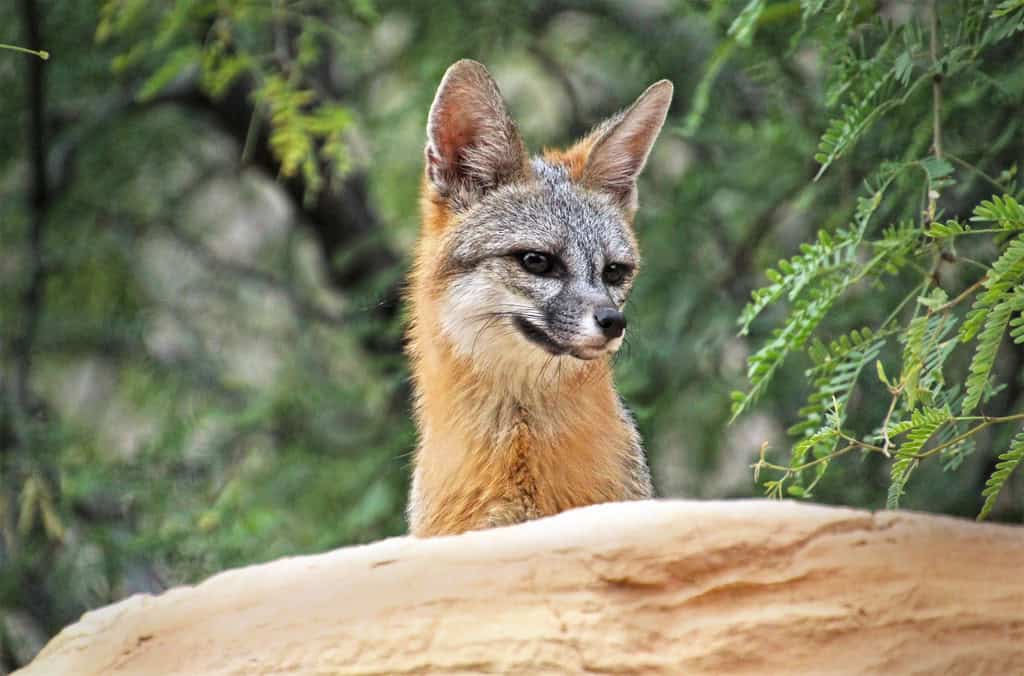
Death Valley National Park harbors one of North America’s most enchanting and least-observed fox species: the kit fox (Vulpes macrotis). These diminutive desert specialists have evolved remarkable adaptations for surviving in extreme heat, including oversized ears for thermoregulation and specialized kidneys that require minimal water. The stark, otherworldly landscapes of Death Valley create an almost supernatural backdrop for observing these elusive creatures, particularly in areas like Mesquite Flat Sand Dunes and the salt flats near Badwater Basin.
Visitors hoping to glimpse kit foxes should plan evening excursions, as these nocturnal hunters emerge at dusk to search for kangaroo rats, lizards, and insects. The best viewing season extends from October through April when temperatures are more moderate, though winter months (December-February) offer particularly magical opportunities as foxes remain active for longer periods during cooler weather. Patience is essential, as kit fox populations remain relatively sparse across their range. Rangers at the Furnace Creek Visitor Center can provide updated information on recent sightings and recommended observation areas. The combination of extraterrestrial-like landscapes and these perfectly adapted desert foxes creates a truly mystical wildlife experience.
Bat-Eared Foxes of the Serengeti, Tanzania
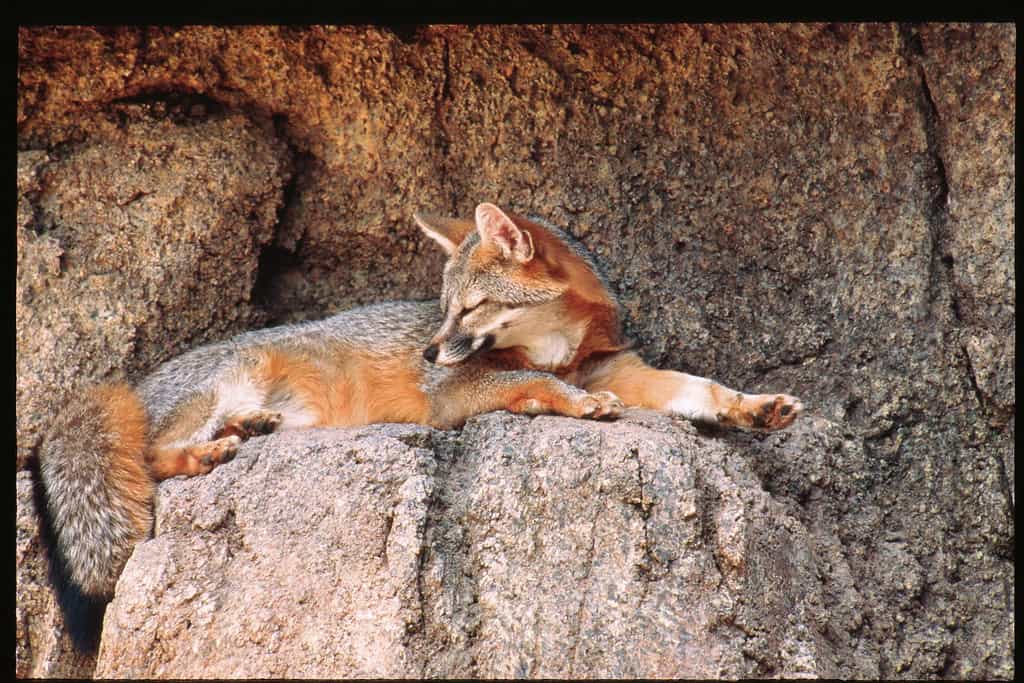
Tanzania’s Serengeti National Park offers one of Africa’s most magical fox-viewing experiences with its populations of bat-eared foxes (Otocyon megalotis). Named for their enormous ears that can reach six inches in length, these distinctive foxes create an almost supernatural impression against the backdrop of the savanna. Unlike most fox species that primarily hunt small mammals, bat-eared foxes have evolved to specialize in harvesting insects, particularly termites and dung beetles, using their acute hearing to detect prey moving underground.
What makes Serengeti bat-eared fox sightings particularly enchanting is their unusually social nature – typically living in small family groups that hunt and play together in open grasslands. The dry season from June to October provides optimal viewing opportunities when shorter grass improves visibility and foxes concentrate near termite mounds. These foxes are primarily diurnal (active during daylight) in cooler months, shifting to more nocturnal habits during intense heat. The classic East African landscape of acacia trees, endless grasslands, and dramatic skies creates a cinematic backdrop for observing these charismatic foxes. Safari guides experienced in locating bat-eared fox territories can significantly enhance the magical experience of witnessing these unique canids in their natural habitat.
Crab-Eating Foxes of Brazil’s Pantanal
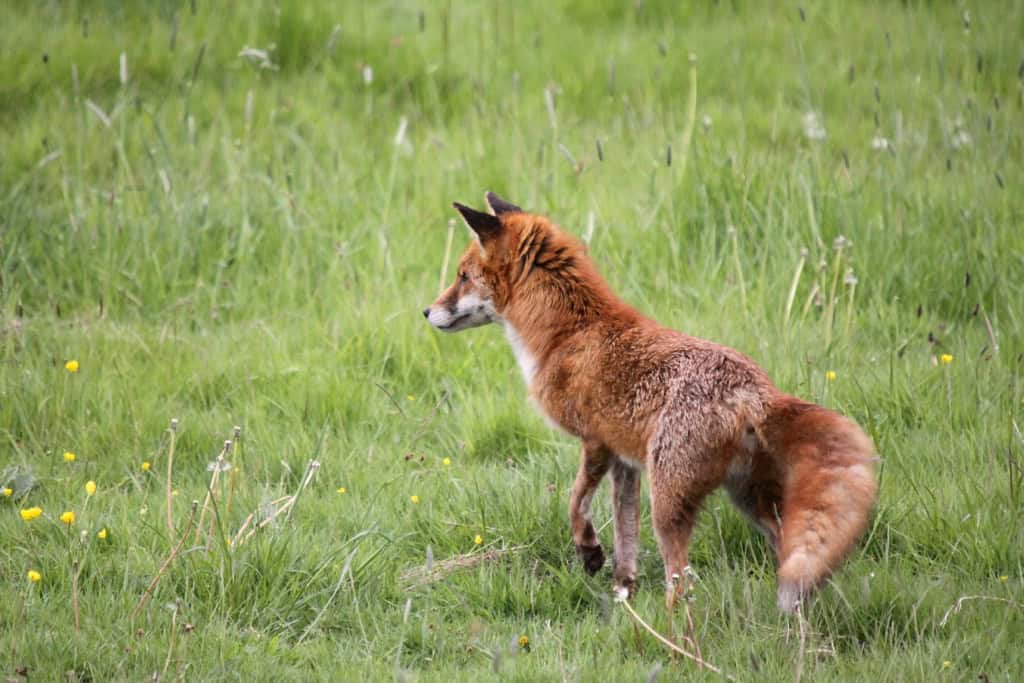
The Pantanal wetlands of Brazil offer a truly magical setting to observe one of South America’s most distinctive canids, the crab-eating fox (Cerdocyon thous). Despite their name, these adaptable omnivores consume a varied diet extending far beyond crabs to include fruits, insects, small vertebrates, and carrion. The Pantanal’s mosaic of seasonally flooded grasslands, gallery forests, and waterways creates a biodiversity hotspot where these foxes thrive alongside jaguars, capybaras, and hundreds of bird species.
The dry season from July to October transforms the Pantanal into an ideal fox-watching destination, as receding waters concentrate wildlife around remaining water sources. Fazendas (ranches) converted to ecotourism offer exceptional viewing opportunities, particularly at dusk when crab-eating foxes emerge to forage. What makes these encounters particularly enchanting is the foxes’ distinctive appearance – with gray-brown fur, black-tipped tail, and fox-typical pointed ears, they create a striking silhouette against the golden light of sunset. Night drives with spotlights often reveal these foxes hunting along roads and forest edges, their eyes reflecting back with an ethereal glow. The combination of extraordinary biodiversity and relatively approachable foxes makes the Pantanal one of the world’s most magical destinations for fox enthusiasts.
Tibetan Sand Foxes of the Qinghai-Tibetan Plateau
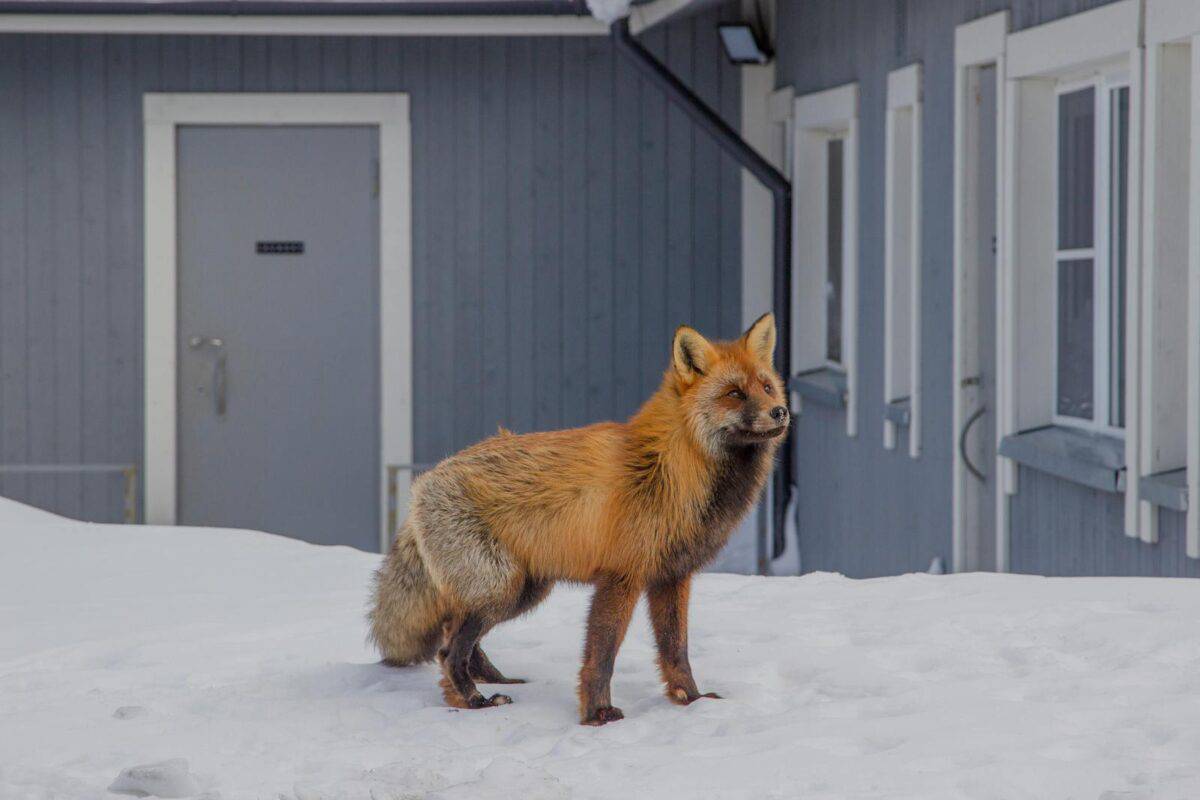
The vast, high-altitude wilderness of the Qinghai-Tibetan Plateau provides one of Earth’s most spectacular settings to observe the enigmatic Tibetan sand fox (Vulpes ferrilata). These distinctive foxes, with their square-shaped heads, small ears, and thick fur, have adapted to life at elevations exceeding 4,500 meters (14,800 feet). The Qinghai Lake region in China and areas around Namtso Lake in Tibet offer particularly magical opportunities to witness these rarely-observed canids against a backdrop of snow-capped mountains, alpine meadows, and sacred lakes.
The summer months from June through August provide the most accessible viewing window, when mountain passes are navigable and foxes are actively hunting for their primary prey – plateau pikas. Unlike many fox species, Tibetan sand foxes are frequently active during daylight hours, creating better observation opportunities for visitors. Their hunting strategy often involves patiently waiting near pika burrows, perfectly still, before pouncing with remarkable precision. This behavior, combined with their striking appearance and the breathtaking Himalayan landscape, creates a truly mystical wildlife viewing experience. While photography safaris specifically targeting these foxes remain rare, specialized wildlife tours to the region increasingly highlight these unique canids as a priority species for observation.
Corsac Foxes of Mongolia’s Steppes
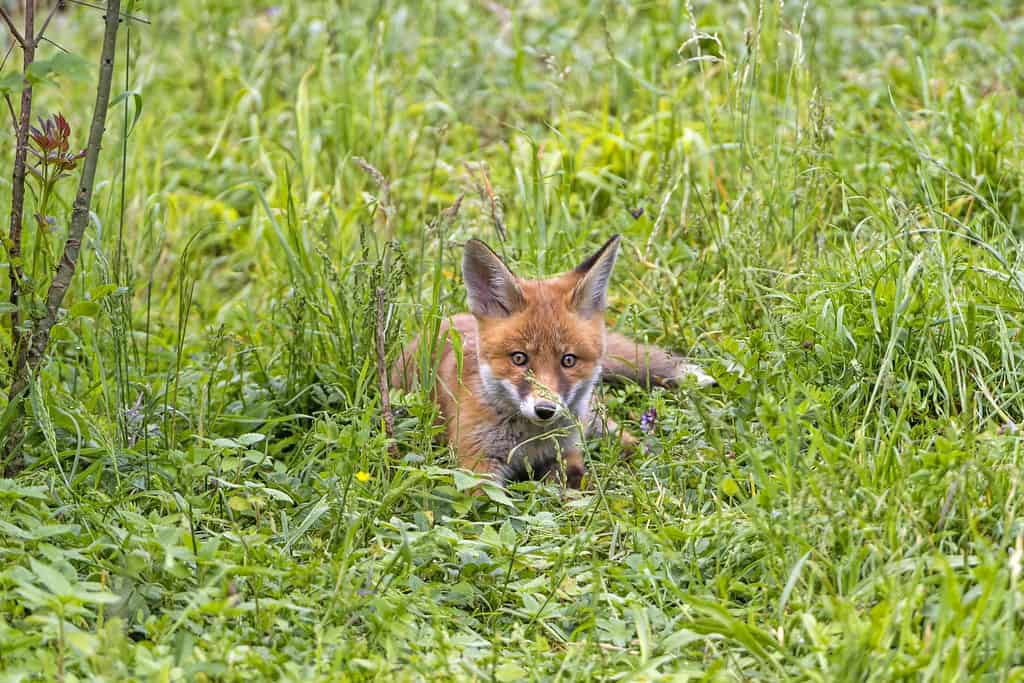
Mongolia’s vast, undeveloped steppe ecosystem harbors one of Asia’s most enchanting fox species – the corsac fox (Vulpes corsac). These medium-sized foxes have evolved special adaptations for surviving Mongolia’s extreme continental climate, where temperatures range from scorching summers to winters reaching -50°C (-58°F). The open grasslands of the Eastern Steppe and areas surrounding the Gobi Desert offer magical opportunities to observe these elegant canids against endless horizons, particularly in protected areas like Hustai National Park.
Unlike many fox species that maintain solitary territories, corsac foxes sometimes form small social groups during winter months, creating unique opportunities to observe multiple foxes together. The best viewing season extends from April through June, when new fox kits emerge from their dens and adults are actively hunting during daylight hours. What makes these encounters particularly special is the corsac fox’s distinctive appearance – pale gray-fulvous fur, black-tipped tail, and exceptionally fluffy winter coat create a striking image against the steppe’s golden grasses. Local nomadic guides, with their intimate knowledge of the landscape and wildlife patterns, can significantly enhance the experience of seeking these elusive foxes. The combination of Mongolia’s vast, unspoiled wilderness and the opportunity to observe these remarkable steppe-adapted foxes creates a truly magical wildlife adventure.
Conclusion: Experiencing the Magic of Wild Foxes

The worldwide quest to observe foxes in their natural habitats offers more than just wildlife sightings – it creates profound connections with some of nature’s most adaptable and charismatic creatures. From the snow-dusted landscapes of Hokkaido to the endless steppes of Mongolia, each fox-watching destination provides its own unique magic, showcasing how these remarkable canids have evolved to thrive in virtually every environment on Earth. The experience of witnessing a wild fox – whether it’s an Arctic fox against Iceland’s volcanic terrain or a bat-eared fox on the Serengeti plains – often creates lifelong memories and deepens our appreciation for wildlife conservation.
As we seek these magical encounters, responsible wildlife observation becomes paramount. Maintaining appropriate distances, never feeding wild foxes, supporting protected areas through visitation, and hiring knowledgeable local guides all contribute to sustainable wildlife tourism that benefits both foxes and human communities. The growing interest in fox-watching also encourages habitat preservation, as local economies increasingly recognize the value of intact ecosystems that support healthy fox populations. For those enchanted by these intelligent, adaptable canids, the quest to observe foxes in the wild offers both adventure and purpose – connecting us with ancient landscapes while inspiring us to ensure these magical creatures continue to thrive for generations to come.
- What Makes the Pygmy Marmoset the World’s Smallest Monkey? - August 15, 2025
- Why Seals Clap Underwater—It’s Not Just for Fun - August 15, 2025
- The 11 Largest Animals to Ever Walk the Earth—Some Still Exist Today - August 15, 2025

